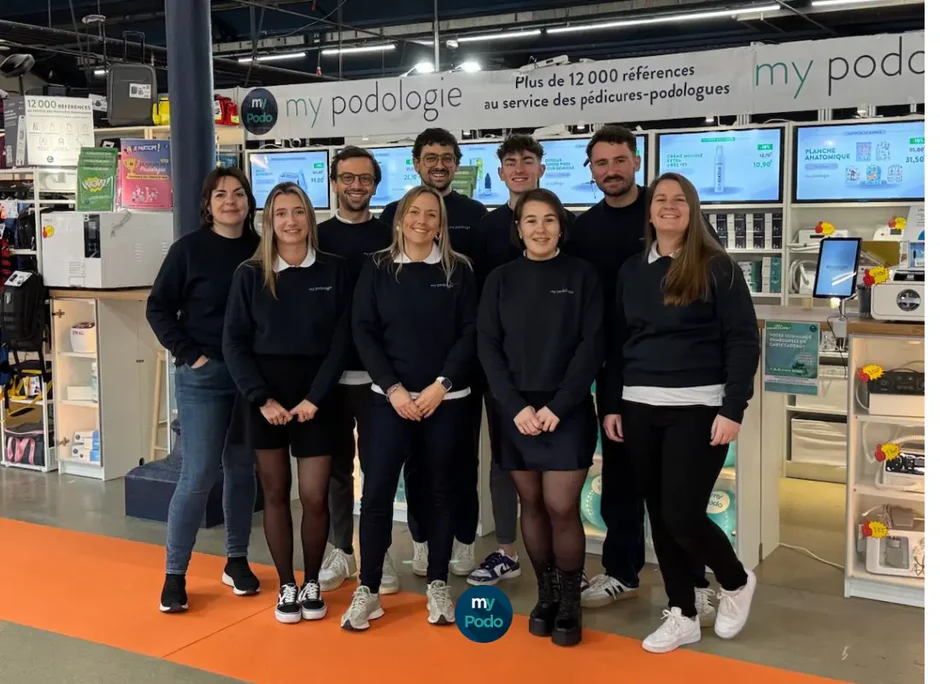Padding , or transitional orthosis, is an essential technique in podiatry, used to protect the epidermis from mechanical aggressions. Historically, this method finds its roots in the empirical practices of ancient barber-surgeons, but it has evolved to become a concrete and effective application in modern podiatry. This guide explores in detail the history, uses, and applications of padding in the office as well as in athletes.
Introduction to padding in podiatry
Padding consists of making dressings using felt and/or adhesive foams. These devices are designed to protect the skin against mechanical aggressions such as friction and pressure. Unlike permanent orthoses, padding is a temporary solution, often made on site by the podiatrist during the treatment session.
The history of padding is closely linked to that of bandages. Since ancient times, people have sought to relieve their ailments by using natural materials such as cotton and wool to protect their feet. In modern times, more sophisticated materials, such as silicone gels and hydrocolloids, have helped to perfect this technique.
The Evolution of Padding: From Empiricism to Modern Podiatry
Padding, as we know it today, has evolved considerably since its first uses. In the past, it was mainly used palliatively, without any real understanding of the underlying mechanisms. Ancient barber-surgeons, such as LAFOREST, barber-surgeon-pedicurist to Louis XV, already used buffalo hide or felt protections to protect their patients' feet.
Over time, progress made in podiatry, particularly thanks to the work of British researchers, has made it possible to develop a wide range of materials suitable for this practice. Today, hypoallergenic adhesives make padding not only more comfortable but also more effective, offering continuous protection against mechanical aggression.
Materials used in padding
1. Pure wool felts
Available in different densities, these felts are commonly used due to their ability to absorb shock and distribute pressure. The felts can be cut and shaped according to the morphology of the patient's foot, thus offering a tailor-made solution.
2. Mosses
Used in addition to felts, foams can be in sheets, tubes, lined or not, and adhesive or not. They are particularly useful for creating protective padding or for relieving a specific area of the foot.
3. Silicone gels and hydrocolloids
These modern materials offer superior protection, especially in cases of acute inflammation. Their viscoelastic properties allow effective shock absorption while reducing friction.
Making padding: Technique and application
The realization of a padding must follow a rigorous approach, similar to that used for other types of orthoses. The podiatrist must first carry out a complete clinical examination to determine the nature and origin of the symptoms. It is essential to look for any primary cause that could be at the origin of the problem.
Padding is generally used in situations where the foot is subjected to mechanical forces, combining a horizontal component (friction) and a vertical component (pressure or compression). The choice of materials and the assembly technique must be adapted according to these constraints.
Against friction
A simple thin protection, such as moleskin or fleecy web, is often enough to reduce skin friction. These materials are lightweight, flexible and adhesive, which allows them to stay in place while providing optimal protection.
Against compression
When compression is the main problem, the use of thicker wool felts helps to create an off-loading effect, thus reducing the pressure on the affected area. The padding should be designed to promote a normalization of foot function, realigning the toes if necessary or balancing the metatarsals.
Padding for athletes: A quick and effective solution
In sports podiatry, padding has a crucial advantage: it can be made quickly on the field, providing immediate relief to athletes. Endurance sports, in particular, are associated with a high risk of skin injuries due to friction and repeated pressure.
Padding helps protect sensitive areas of the foot, such as the toes and soles, reducing the risk of blisters, keratoses and other skin conditions. Once the competition is over, a more permanent foot orthotic may be offered to the athlete for long-term treatment.
Duration and monitoring of padding
Properly applied padding should remain in place for a variable period of time, ranging from a few days to several weeks, depending on the patient's profile and the nature of the pathology. Older patients, or those with limited ability to maintain perfect hygiene, may require more frequent follow-up visits to check the condition of the padding and replace it if necessary.
The fact that the padding is fixed directly to the skin makes it unique among temporary orthoses. It accompanies the skin in its movements, providing continuous protection over 24 hours, and promotes an ideal environment for correction with a definitive silicone orthosis if necessary.







